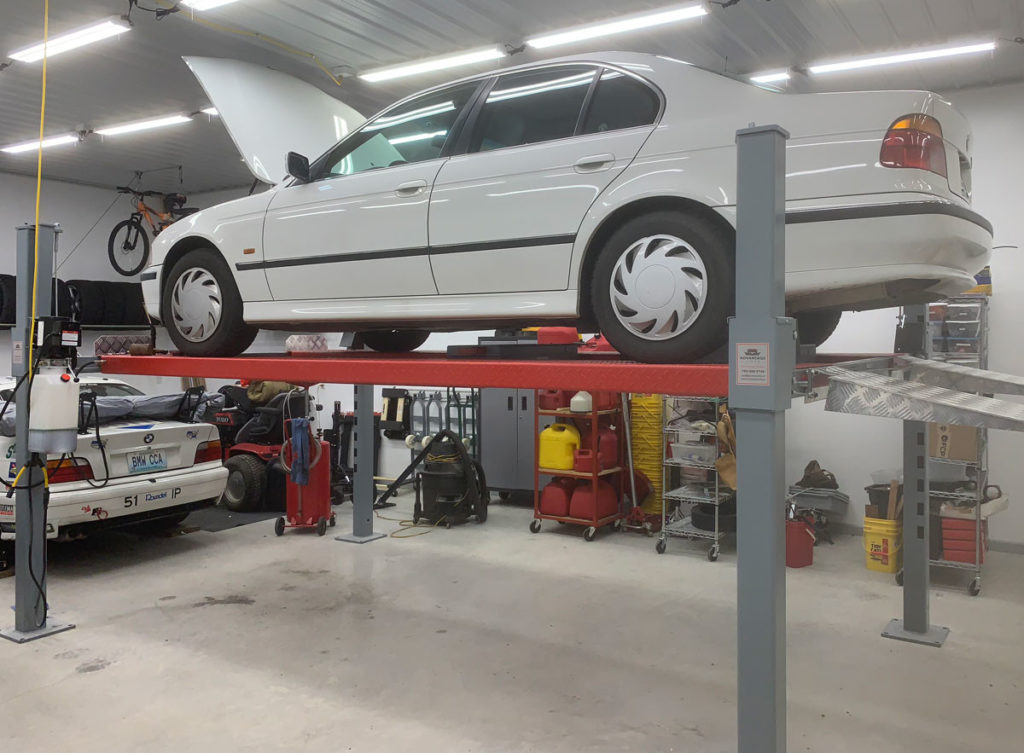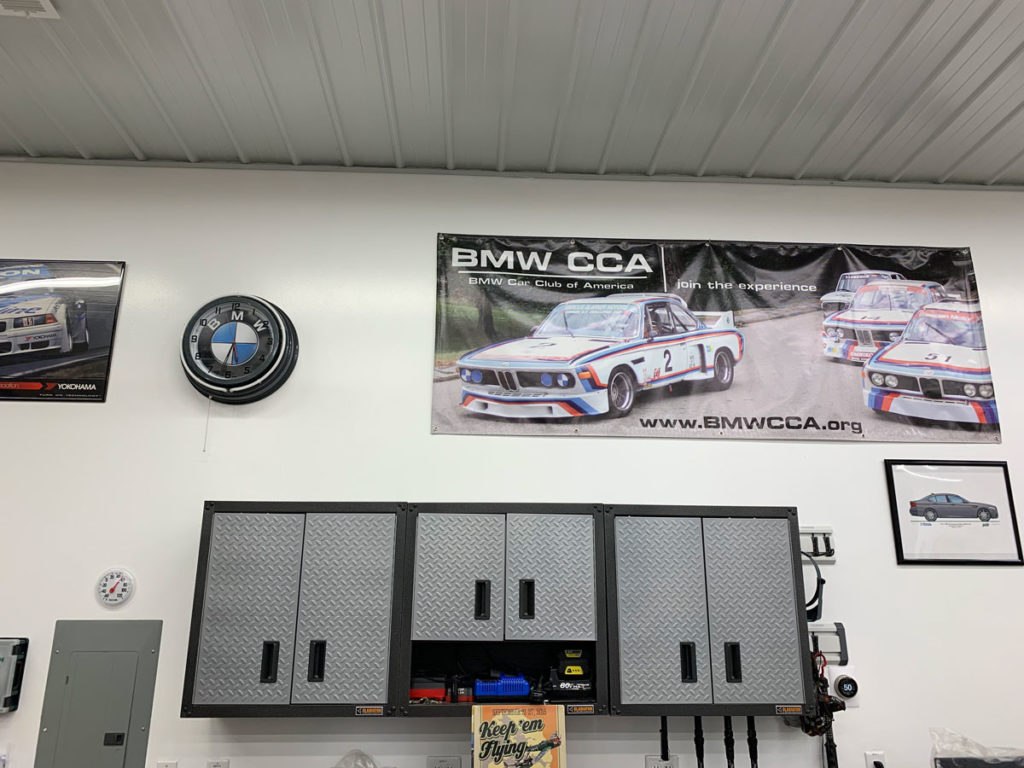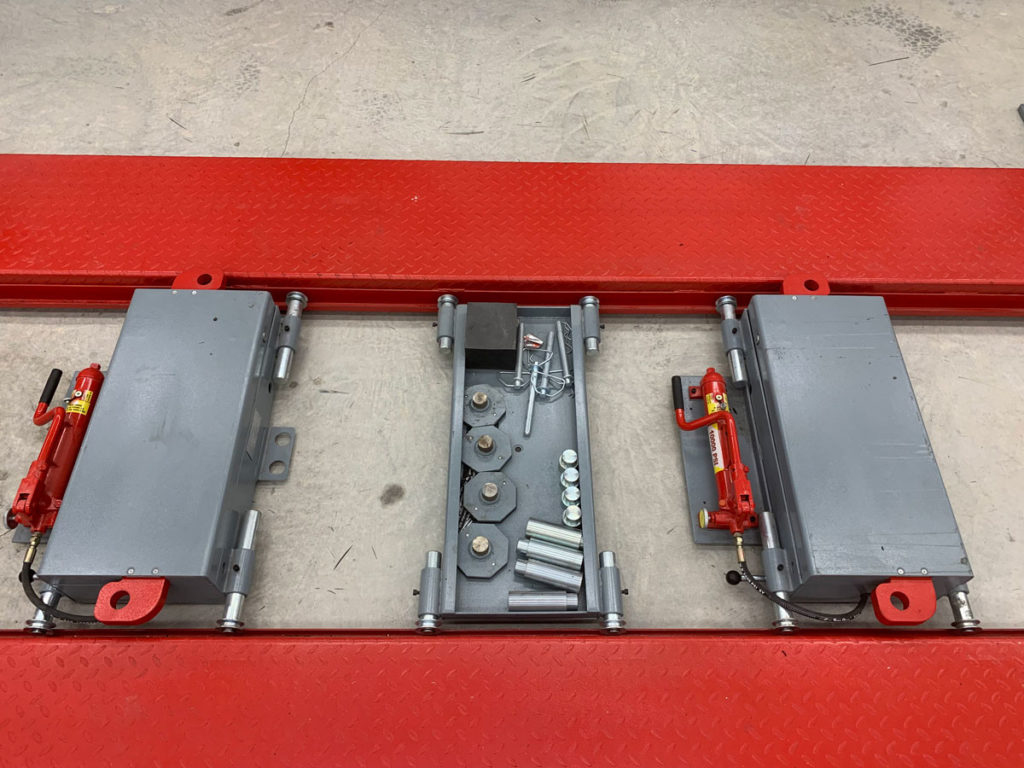Do you need a lift? Sure, we all do. All of us who work on our cars, that is. We just have to figure out what equipment our finances and space allow.
In one of my favorite movies, Field of Dreams, Kevin Costner’s character, Ray Kinsella, is asked by his father, “Is this heaven?” Ray answers that it’s Iowa. I love Iowa. I have visited the actual Field of Dreams. I even walked into the corn, but don’t ask me what’s in there; I’m sworn to secrecy. While Iowa and the famous baseball field outside of Dyersville are beautiful, I have another candidate for heaven on earth, and like Ray Kinsella’s Field of Dreams, it’s in my backyard.
 Every baseball fan should visit here.
Every baseball fan should visit here.
You could call it the Garage of Dreams. I simply call it “the shop.” Either way, when working on cars, it can be heavenly.
You may recall me telling how our attached three-car garage exceeded its maximum capacity when I was forced to squeeze four cars into it. With everything else it accumulated over the years, I could barely walk through it let alone work on vehicles.
The solution was to sacrifice some of our back yard to put up a new building.
After the builders erected it and poured the concrete floor, I added insulation, a heat pump, LED ceiling lights, and sufficient electrical outlets (if there is such a thing as sufficient electrical outlets). Some new equipment as well as vintage items from the old garage came next: tool chests, wall cabinets, workbench, air compressor, floor jacks. All these items were placed around the edges of the floor because I was saving the center for the one item that would convert this otherwise nice-but-ordinary building into a do-it-yourselfer’s heaven: a full-rise lift. My days of working underneath cars on my back on cold concrete floors or hot driveways were over.
 No more cold concrete floors.
No more cold concrete floors.
My formative years were spent in my parents’ service station, which they built when I was five. Dad was a top-notch mechanic and welder who preached using the right tool for the job. When you’re a professional mechanic, one of those tools is a full-rise lift. Ours was an in-ground monster that was easy to get cars on and off and simple to operate. As I graduated from floor sweeper and tool chaser to oil change specialist, I learned to appreciate the lift for its utility, speed, and safety. Most people don’t know this, but using that lift, I invented the 15-minute oil change years before Jiffy Lube. In those days it was harder to do it fast because you actually had to lube grease fittings as part of the oil change. And unlike some of the quick-lube joints, I never stripped an oil drain plug.
My folks sold the service station about the time I went off to college, so then I had to raise cars like most people—with floor jacks, bottle jacks, or ramps—and always with jack stands or other positive safety devices. Dad also instilled in me a healthy respect for the potential hazards of working under a couple of tons of steel and glass—or in the case of some BMWs, aluminum and carbon fiber. That’s why I never get under a car unless the lifting device has a positive locking system, or is backed up by jack stands or blocks or something to ensure that the highest thing the car ends up resting on is not me.
For most BMW CCA members who work on their own vehicles, this safety admonition is like preaching to the choir because most of the time, people use good sense. But I have observed enough bad examples to know it can’t hurt to constantly emphasize lifting safety.
This is especially important when using jacks, because even high-quality jacks can fail. I have seen too many drivers or crew at the track do a quick jack lift without jack stands. Speed and convenience is not a good excuse for failing to use jack stands, because you never know…
When it was time to replace my E36 M3’s transmission, being the lift paranoiac that I am, I passed on jack stands in favor of jacking up the car and chocking the wheels on top of 20-inch high and two foot-long stacks of screwed-together 2 x 12s before I crawled under and started wrestling with the exhaust, drive shaft, and transmission. Overkill? Maybe, but I’m still here to tell the tale.
 The right decor is also important.
The right decor is also important.
When we built our current house with the garage we mistakenly thought would forever be large enough, a huge steel I-beam running the length of the ceiling prevented installation of a full-rise lift. After a few years of floor jacks and jack stands I went with a mid-rise scissor lift that raised the car enough to work on wheels, brakes, and some suspension components that were accessible from the side. Even though that lift was well made with a positive locking device, I still used jack stands because, you never know…
Since opening the Garaj Mahal, I hope those days are behind me. I chose a four-post lift rather than the more popular two-post for a number of reasons. The four-post does not need to be bolted to the floor and can be easily moved by attaching casters that came with the lift. I know that a good, properly installed two-post is safe, but I like the inherent stability of the four-post.
A common criticism of four-post lifts is that they’re great for working under the car, but not so much around the wheels, since the wheels rest on the lift’s decks. That’s true, unless you opt for the hydraulic jack trolleys that roll along under the car with arms that extend under the car’s lifting points. Using these, I can remove the wheels and get to everything.
 Jacks on trolleys can lift cars off the wheels.
Jacks on trolleys can lift cars off the wheels.
Falling back to safety first, I chose my particular lift based on the size and thickness of the steel posts and sliders, the type and number of dead-bolt safety locks, and the quality of the components and construction. I elected to have the device professionally assembled, because I’m not a professional lift installer. Duh! But it doesn’t stop with assembly. Lifts have enormous power; enough to raise 9,000 pounds in this case. As we all know, with great power comes great responsibility. Being a lift owner requires continuous inspection and regular maintenance to keep it safe, mostly with cleaning and proper lubrication.
A garage with a full-rise lift is not in the cards for many of our fellow do-it-yourself wrenchers, who will soldier on with floor jacks and other devices as most of my friends and I did for years. However, many cities have an alternative: businesses that rent lifts in their shops for reasonable rates and may also provide tools, advice, and assistance. Our local BMW CCA chapter hosted tech sessions at such a facility in the past.
My lift proved its worth recently when I replaced a number of power steering and cooling system components on Betty’s ’97 BMW 528i. As many of you know, some items are more easily reached from above, and some from below. Changing the car’s level accordingly made the job so much easier and probably improved the quality of my work.
Combining the lift with a rolling oil drain can with a long-necked funnel means oil changes are still as easy as they were in my youth. If I hustle—and without those annoying grease fittings—I can get those 15-minute oil changes down to 10 minutes.
Is this automotive do-it-yourself heaven? Maybe it is.—Scott Blazey





















